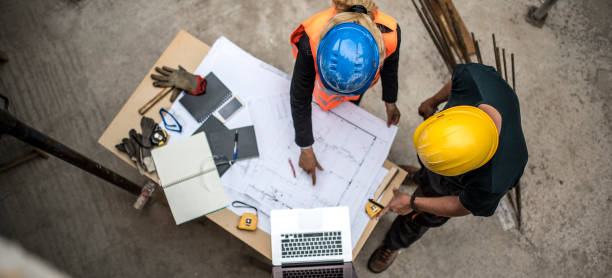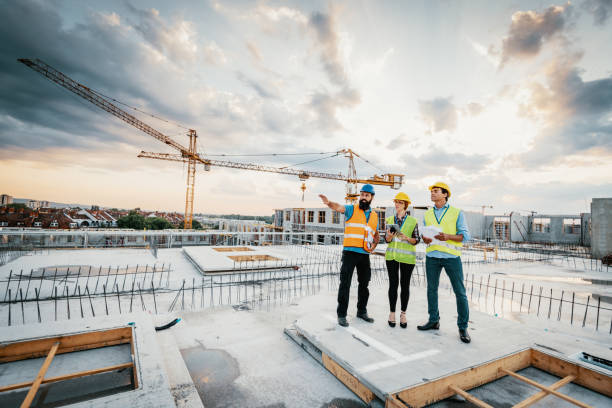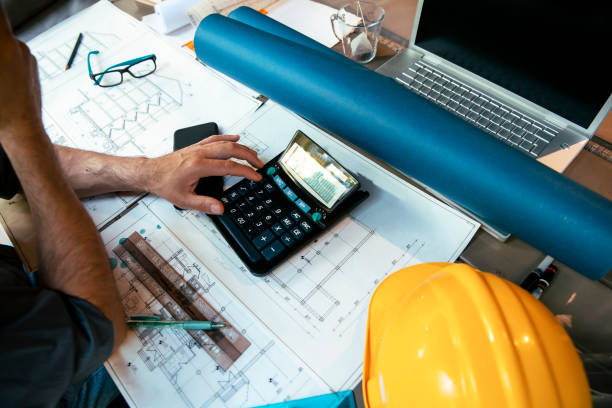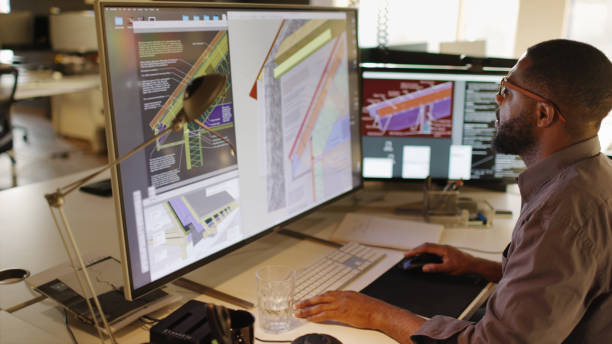Starting a construction project, whether a residential build, a commercial renovation, or a major infrastructure development, can be overwhelming. With many considerations, such as budgets, timelines, designs, and compliance, the planning phase often feels like a complex puzzle. However, with a structured approach, the planning process can be streamlined, ensuring that your project stays on track, within budget, and meets the desired outcomes.
This article will walk you through three fundamental steps to help you plan your construction project successfully. These steps—clarifying your goals, assembling the right team, and determining your budget—are essential for setting a solid foundation for your project’s success.
Step 1: Clarify Your Goals
The first step in planning a construction project is clarifying your goals. Making informed decisions throughout the planning process becomes difficult without a clear understanding of what you want to achieve. Your goals serve as the guiding force behind the entire project, helping to keep everything aligned with your vision and mission.

Defining Your Vision
At the outset of your project, take some time to ask yourself and your stakeholders the following critical questions:
- What is the ultimate purpose of this project?
- What are the expected outcomes and benefits?
- How will this space or structure be used?
- Who will be the primary users of the completed project?
- What are the long-term goals for the project?
For instance, if you are constructing a new office building, your goal might be to create a modern, energy-efficient space that enhances employee productivity and creates a positive impression on clients. Alternatively, if it’s a residential project, your aim could be to create a comfortable, sustainable home that fits the family’s needs for years.
Clarifying your goals also involves setting realistic expectations. While it’s important to think big, you should be mindful of budget, timeline, and site conditions. An ideal project vision should capture what you want to achieve while acknowledging any constraints that could influence the design or execution.
Why Clarity is Important
Clear goals provide a touchstone for all subsequent decisions and can prevent costly changes later in the process. When the project goals are well-defined, everyone involved understands the overall purpose, reduces confusion, and minimizes potential conflicts. A lack of clarity early on can lead to miscommunications, delays, and unforeseen expenses, which could easily derail your project.
For example, suppose your initial goal is to build a commercial space that fosters a creative, open environment for your employees. If this goal isn’t communicated, the design team might opt for traditional, closed-off office layouts, resulting in costly redesigns later. Defining goals early can avoid these scenarios and streamline the planning phase.
Step 2: Identify the Right Team
The success of any construction project hinges on the team you assemble. A construction project requires collaboration between multiple stakeholders, both internal and external. Having the right team members in place will make the process smoother, foster effective communication, and ensure that your project meets the highest standards.

Internal Team Members
The first step is to engage the key internal stakeholders. This group should consist of individuals who have a vested interest in the project’s outcome. For example:
- Project manager: This person will coordinate all aspects of the project and ensure that everything stays on schedule.
- Design team: If you are developing a new building, you’ll need a team to translate your vision into architectural and engineering plans.
- Operations or facilities team: Once the space is complete, these team members can provide insight into its day-to-day operational needs.
- Finance team: If the project requires financial oversight, ensure that someone from the finance department is included to manage costs and budget allocation.
Having these key players on your internal team helps ensure that all aspects of the project are covered and that you’re not blindsided by any unforeseen needs or issues that might arise during construction.
External Partners
Once your internal team is set, the next step is to identify external partners who will play a critical role in executing the project. These partners include:
- Construction company: The construction firm will handle the building work, coordinate labour, and ensure the project is completed on time.
- Architects: Architects translate your project goals into a concrete design that meets all relevant codes and regulations.
- Engineers and specialists: Depending on the project’s complexity, you may need civil, mechanical, electrical, or structural engineers to address specific technical needs.
- Subcontractors: For larger projects, subcontractors specializing in plumbing, electrical work, or HVAC systems may be necessary.
The key to choosing the right team is finding professionals who share your vision, values, and commitment to quality. Aligning with a construction team that understands and supports your project goals increases the likelihood of a smooth process and high-quality outcomes.
Team Collaboration
One of the most critical elements of a successful construction project is fostering a culture of collaboration between all team members. Regular communication, transparency, and a shared sense of ownership can help everyone work together toward the same goal. Involving all the right parties early on, from the architects to the engineers to the construction crew, ensures that everyone is on the same page and ready to contribute their expertise to the project.
Step 3: Determine Your Budget
Budgeting is often the most challenging aspect of planning a construction project, as there are many factors to consider. The reality is that most projects require a balance between your ideal project scope and the available financial resources. However, having a solid budget can help you avoid unnecessary stress later.

How Much Can You Afford?
The first question to ask is: What is your budget? Be realistic about how much money you have available to fund the project. You may need to consult with financial experts, loan officers, or investors to assess how much you can afford to spend.
Additionally, consider the long-term costs of maintaining the project. Some construction projects may require ongoing investment in upkeep, operational costs, or energy efficiency.
Securing Financial Resources
Once you’ve determined your budget, the next step is to secure the financial resources necessary to complete the project. This may involve seeking external financing, such as loans, grants, or crowdfunding. Explore your options and communicate with potential lenders or investors about the project’s scope and goals.
Breaking Down the Budget
Once you’ve established your budget, it’s time to break it down into specific categories. Some of the primary costs associated with construction projects include:
- Site preparation and clearing
- Labor and materials
- Architectural and engineering fees
- Permits and legal compliance
- Contingency funds for unexpected issues
Allocating contingency funds in the budget ensures you account for potential cost overruns. A common rule of thumb is to set aside at least 10-20% of the project’s total cost for unexpected expenses.
Managing the Budget
It’s also important to communicate your budget clearly with your project team. Your construction partner should provide a detailed cost estimate and be transparent about where the money is going. If the project scope changes, you should discuss how these changes will impact the budget and work with the team to adjust accordingly.
Sometimes, when budget constraints arise, breaking the project into phases can allow you to complete the most essential elements first, allowing time to raise additional funds for later phases. For example, a school expansion project might begin by completing the most critical classrooms while fundraising for the additional facilities.
Conclusion
Planning a construction project can indeed feel overwhelming, but by following these three steps—clarifying your goals, assembling the right team, and determining your budget—you can significantly simplify the process and set your project up for success. Taking a thoughtful, strategic approach to each step ensures that your construction project meets your immediate needs and delivers long-term value for years to come.
Remember, successful construction projects don’t happen overnight. Careful planning, clear communication, and diligent financial management are key to a smooth and efficient build. By approaching your construction project with a structured plan, you can ensure that your vision is brought to life on time and within budget.

